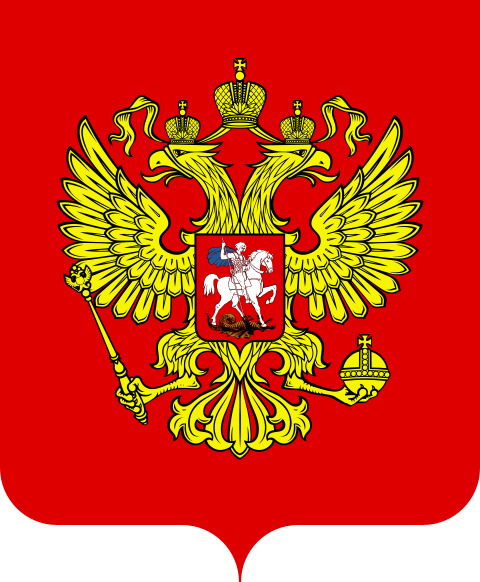|
U.S.RussianBusiness Beyond an occasional news story |
Site
Menu
 |
|
Russia: Key
Facts
 Russia is a unique
emerging market and a
superpower. Russia is a unique
emerging market and a
superpower. Its
exports are primarily resource based, but
it has a pool of technical talent in aerospace, nuclear
engineering, and basic sciences. Its
exports are primarily resource based, but
it has a pool of technical talent in aerospace, nuclear
engineering, and basic sciences. Russia's story
of integration into the world economy is
as significant as the emergence of China and India. Russia's story
of integration into the world economy is
as significant as the emergence of China and India. The Russian
economy is on much firmer ground now and the Russian
government is determined to make Russia a modern
first world economy. The Russian
economy is on much firmer ground now and the Russian
government is determined to make Russia a modern
first world economy. After attaining
broad macro
economic stability and high growth likely to
exceed both India and China in 2008, the focus is now on
using the windfall from exports of its mineral resources
to build and modernize infrastructure and create an
environment conducive to business, particularly the non
commodities exports. After attaining
broad macro
economic stability and high growth likely to
exceed both India and China in 2008, the focus is now on
using the windfall from exports of its mineral resources
to build and modernize infrastructure and create an
environment conducive to business, particularly the non
commodities exports. Arms sales have
increased to the point where Russia is first in the world
in sale of weapons. Arms sales have
increased to the point where Russia is first in the world
in sale of weapons. The IT
industry has recorded several record years of
growth in high end niches like algorithm design and
microelectronics, while leaving the lesser end work to
India and China; Russia is now the world's third biggest
destination for outsourcing software behind India and
China. The IT
industry has recorded several record years of
growth in high end niches like algorithm design and
microelectronics, while leaving the lesser end work to
India and China; Russia is now the world's third biggest
destination for outsourcing software behind India and
China. The
space launch industry is now the world's
second largest behind Arian Space of Europe and nuclear
power plant companies are going from strength to strength,
selling plants to China and India, and recently signed a
joint venture with Toshiba to develop cutting edge power
plants. The
space launch industry is now the world's
second largest behind Arian Space of Europe and nuclear
power plant companies are going from strength to strength,
selling plants to China and India, and recently signed a
joint venture with Toshiba to develop cutting edge power
plants. The
civilian aerospace industry has also made
a comeback with the Sukhoi Superjet, arguably the most
advanced regional jet available, as well as the upcoming
MS 21 project to compete with Boeing and Airbus. The
civilian aerospace industry has also made
a comeback with the Sukhoi Superjet, arguably the most
advanced regional jet available, as well as the upcoming
MS 21 project to compete with Boeing and Airbus. Russia is well
on its way to being a developed country within the
2020-2025 timeframe. To sustain this momentum of high
growth in high end manufacturing and services the
government has pumped large amounts of money in higher
education, resulting in the highest
number of student enrolment in higher education at any
time in history, including at the zenith of the
USSR. Russia is well
on its way to being a developed country within the
2020-2025 timeframe. To sustain this momentum of high
growth in high end manufacturing and services the
government has pumped large amounts of money in higher
education, resulting in the highest
number of student enrolment in higher education at any
time in history, including at the zenith of the
USSR. Russia's GDP, estimated
at $1,250 billion at 2007 exchange rates, increased by
8.1% in 2007 compared to 2006. Continued average inflation
of approximately 10%. Russia's GDP, estimated
at $1,250 billion at 2007 exchange rates, increased by
8.1% in 2007 compared to 2006. Continued average inflation
of approximately 10%. As of 2005,
oil industry and
related services account for at least 40 per
cent of the gross domestic product of Russia. As of 2005,
oil industry and
related services account for at least 40 per
cent of the gross domestic product of Russia. As of April 2008, the International
Monetary Fund estimates that Russia's gross domestic
product will grow to $3,462,998 million by 2013, a 168%
increase compared to 2007. Its GDP PPP is estimated to
grow from $2,087,815 to $3,330,623 in the same time, which
would make it the second largest economy in
Europe in terms of purchasing power. As of April 2008, the International
Monetary Fund estimates that Russia's gross domestic
product will grow to $3,462,998 million by 2013, a 168%
increase compared to 2007. Its GDP PPP is estimated to
grow from $2,087,815 to $3,330,623 in the same time, which
would make it the second largest economy in
Europe in terms of purchasing power.
Other Key Facts:
| ||
|
|
|
|
|
Special
Note
|
|
© Copyright FertiKola, 2008. All Rights
Reserved.



 back to
back to